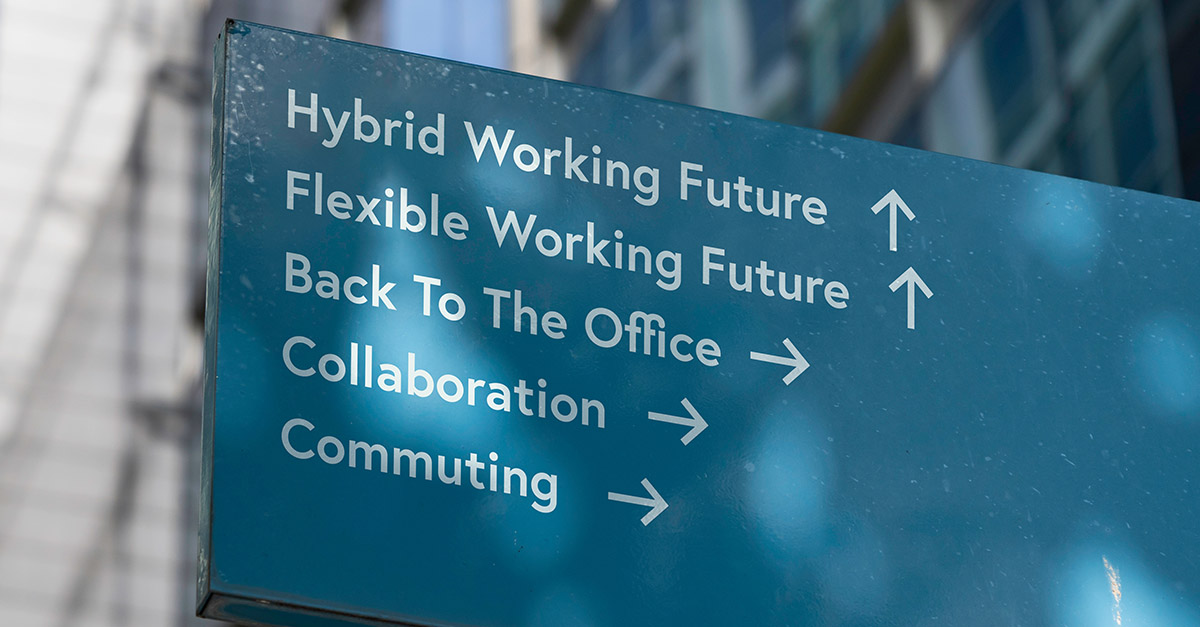Employment Status, Sham Contracts and Labour Government Reforms

With a general election looming, there is much speculation about which party will be elected to form a new Government.
A lack of clarity surrounding an individual’s employment status is not a novel problem within employment law. This uncertainty has been compounded in recent years by advancements in technology and a step away from traditional working models. In particular, the gig economy has had a major impact on awareness of an individual’s employment status.
With a general election looming, there is much speculation about which party will be elected to form a new Government. The latest poll by YouGov, which shows the voting intention figures of the British public, indicates that the Labour Party is on track to secure 46% of votes compared to 24% for the Conservative Party.
With Keir Starmer’s Labour Party looking set to take up residency at Number 10, what will a Labour Government mean for employment law and more pertinently, employment status?
Employment Status
At present, UK employment law recognises three types of employment status:
1. Employees
2. Self-employed
3. Workers
The importance of establishing an individual’s employment status is not to be understated as it affects the employment protections to which an individual is entitled.
Those who are genuinely self-employed are not protected by employment law, whereas workers are entitled to protections such as the national minimum wage, paid holiday and protection against the unlawful deduction of wages and discrimination. However, unlike employees, they are not entitled to Statutory Sick Pay, maternity/paternity leave, Statutory Redundancy Pay or protection from unfair dismissal.
Consequently, obtaining employee status provides access to comprehensive employment protection and rights.
Determining Employment Status
Despite both employee and worker status having statutory definitions, how we determine who is an employee or a worker has actually been decided through case law. This can make identifying employment status difficult as there is no definitive test as such; rather, there are certain principles which are applied to practical situations to determine status.
There are three key elements (known collectively as the Irreducible Minimum) which typically lead to a Tribunal deciding that an individual is an employee:
1. Personal Service – the individual has to perform their work personally; they cannot engage a substitute to do their job for them.
2. Mutuality of Obligation – the individual has to carry out work provided to them by their employer, and that employer is obliged to give them work.
3. Control – the employer exercises a high level of control over the individual, for example telling them when, where and how to work.
These elements are also used to distinguish between those who are self-employed and workers. Individuals who are self-employed will generally not satisfy any of the three elements, whereas those with worker status sit somewhere in the middle. Workers will need to satisfy the irreducible minimum test but to a lesser extent. There will still, in most cases, be a requirement for personal service; however a worker may be subject to less control and mutuality of obligation than an employee.
The Gig Economy and Sham Contracts
Whilst there are statutory definitions for employees and workers, the tests for deciding an individual’s employment status are derived from cases where there have been disputes about status which have come before the courts. Establishing employment status may not be straightforward and the lack of statutory definitions means that sham contracts have become prevalent – particularly within the gig economy.
Sham contracts, also known as bogus self-employment, is where an employer labels their workers as self-employed, despite this often not reflecting the realities of the working relationship. Typically, in a sham contract situation, an employer will have some form of control over a so-called self-employed individual, despite the absence of control being a key feature of self-employment. Examples of control include making an individual wear a uniform, providing them with equipment, and requiring them to work at the employer’s premises.
Bogus self-employment has led to an increase in litigation, with individuals bringing cases against Uber , Pimlico Plumbers and CitySprint in an attempt to assert worker status. The majority of these cases have been successful; but this could backfire badly if the business owners take the view that their business structure is no longer viable due to the increased protections which the law now gives those who work for them.
The Citizen’s Advice Bureau estimates that as many as 460,000 people could be bogusly self-employed , which results in a loss of approximately £314 million for the Government in lost tax and employer national insurance contributions.
In addition to this, technological advancements and the success of the gig economy has also meant that worker status has become broader. A clear advantage of the gig economy is the flexibility it offers to individuals, which is hard to reconcile with employee status, a central feature of which is being told when, where and how to do work. As the threshold for establishing worker status is less stringent than the test for employee status, increases in atypical working have led to worker status becoming more prevalent, thereby denying these individuals, particularly those working in the gig economy, full employment protection.
Labour Reform Proposals
Labour’s Green Paper “New Deal for Working People” set out numerous proposed changes to employment law, including reforms for employment status to combat sham contracts.
One of these is to create a singular “worker” category for all, except for those who are genuinely self-employed. This would remove any ambiguity around employment status and extend all employee statutory rights to both workers and employees, including gig economy workers.
In addition to this, Labour proposes to scrap the qualifying times for basic rights such as protection from unfair dismissal, parental leave, and sick pay, thereby strengthening the protections afforded to those who would fall under the new, singular “worker” category.
Labour claims the introduction of the single status would work to eliminate the prevalence of bogus self-employment, as unless an employer can prove an individual is genuinely in business on their own account and properly self-employed, they would be considered a worker (in the new Labour-world definition of the term) and would be fully protected under employment law.
The Trades Union Congress and Chartered Institute of Personnel and Development (CIPD) also recommends simplifying the employment status tests to create a single worker/employee category, with everyone else being considered self-employed.
However, there are drawbacks for removing the three-tier employment categories:
• It would limit the choice of flexible working options that employers and individuals have available to them.
• Extending employee rights to workers would be costly for employers, as workers would have access to rights such as maternity/paternity/adoption leave /pay and also the right to request flexible working.
• There is the potential that more individuals will be found to be self-employed, and therefore lose access to worker rights such as holiday pay.
• If rights in unfair dismissal accrue from day 1, how do employers fare when a new starter fails their probationary period – will they typically be facing claims for unfair dismissal from someone patently unsuitable or incompetent? With the potential for increased claims from those dismissed below the current 2 year guillotine, how will this affect an already straitened tribunal system?
Additionally, it does not follow that, by introducing a single employment status, it would reduce bogus self-employment. The likelihood is that employers would continue to try to shoehorn those who are properly workers into being self-employed in order to limit their access to statutory rights, causing individuals to bring claims to challenge their employment status.
What are the practical implications?
The changes proposed by Labour are clearly for the benefit of working people, but it would be employers which bear the brunt of the adverse implications of reform – namely the cost of extending employee rights to workers.
Making employment rights, like maternity leave and the right to request flexible working, a “day 1” right for all workers will also further increase costs for an employer, as well as disrupt and impact on productivity.
Gig economy companies will have to review their working models in light of any single employment status and small businesses in particular may struggle both financially and structurally to accommodate the proposed changes.
It has yet to be seen if these reforms will make it into Labour’s general election manifesto, although following the Labour Party Conference in October 2023, pledges have been made that these reforms would be introduced as new legislation within the first 100 days of a Labour government. Employers should therefore carefully consider the financial implications that having a single employment status could have on their business and which, if any, of their staff might be impacted.
This article was written by Gemma Ospedale, Partner in the London Employment Team, with contributions from Gemma Moore, Trainee Solicitor.
Given the complexity of ascertaining employment status and the impact this can have on both individuals and employers, those with concerns about any of the points referred to should seek bespoke legal advice. RWK Goodman has a large team of employment law experts who can help to guide you through the employment status minefield and would be delighted to assist.
Disclaimer: This article is intended for educational purposes only and does not constitute legal advice.
Citations
[1] Voting Intention: Con 24%, Lab 46% (7-8 Sep 2023) | YouGov
[2] This entitles people who are off work from sickness to receive a weekly statutory sick pay payment of up to £109.40 for up to 28 weeks.
[3] In the event you are made redundant and have worked for your employer for 2 years or more, you will be entitled to pay payment which is dependent on your age, length of service and weekly pay.
[4] Uber BV v Aslam [2021] UKSC 5
[5] Pimlico Plumbers v Smith [2018] UKSC 29
[6] Dewhurst v Citysprint UK Ltd ET/220512/2016
[7] Bogus self-employment costing millions to workers and Government – Home (citizensadvice.org.uk)
[8] A New Deal for Working People – The Labour Party
[9] https://www.tuc.org.uk/sites/default/files/TUCresponse-statusconsultation.pdf
[10] https://www.cipd.co.uk/Images/reforming-employment-status-building-a-stronger-foundation-for-employment-rights_tcm18-86859.pdf >
Read more from around RWK Goodman
View more articles related to Employment and Employment







